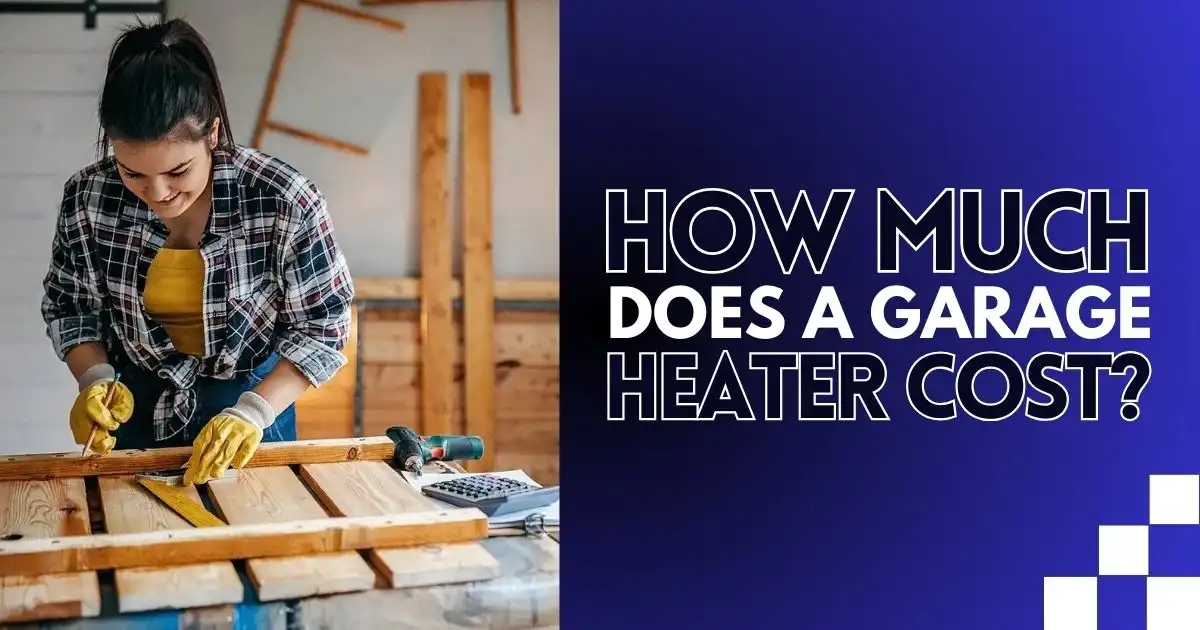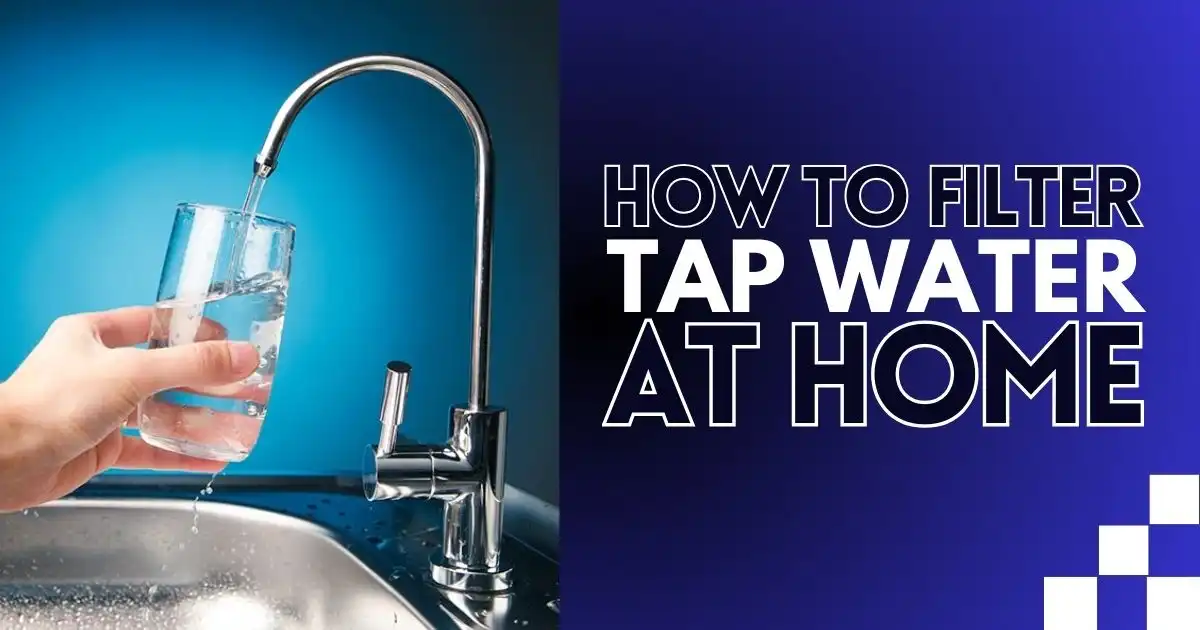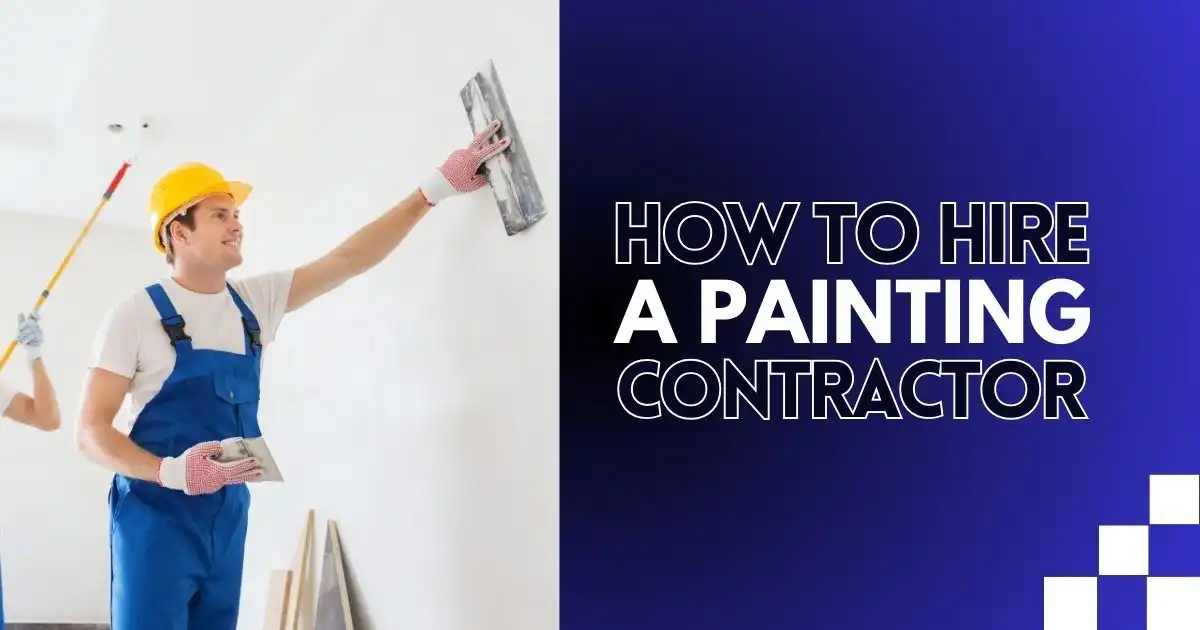According to the Environmental Protection Agency, air duct cleaning costs for an average-sized home range from $450 to $1,000. Prices vary based on duct type, system size, accessibility, and contamination level. Homeowners concerned about indoor air quality, allergens, and energy bills should invest in proper cleaning to improve HVAC cleaning cost efficiency and health.
Beware of low-cost “whole house” deals, as they often exclude essential components like fans, coils, and registers. The National Air Duct Cleaners Association (NADCA) states that certified professionals offer transparent pricing for a thorough cleaning. This prevents scams, improves air quality, and reduces allergy risks and respiratory issues at home.
What is Air Duct Cleaning?
Air duct cleaning is the process of removing dust, debris, and contaminants from the ductwork of heating, ventilation, and air conditioning (HVAC) systems. This includes cleaning supply and return air ducts, registers, grilles, and components to improve indoor air quality and HVAC cleaning cost efficiency. Proper cleaning helps reduce allergens, mold, and airborne pollutants.
The main function of air duct cleaning is to enhance airflow, maintain a clean indoor environment, and prevent system blockages that can lead to inefficiency or damage. Clean ducts improve energy efficiency, lower utility bills, and extend HVAC lifespan. This process is especially beneficial for households with allergies, pets, or respiratory conditions.
7 Factors That Affect Air Duct Cleaning Costs
Various elements impact air duct cleaning costs, making it essential for homeowners to understand pricing variations. Awareness of these factors allows for better budgeting, informed choices, and avoiding unnecessary expenses.
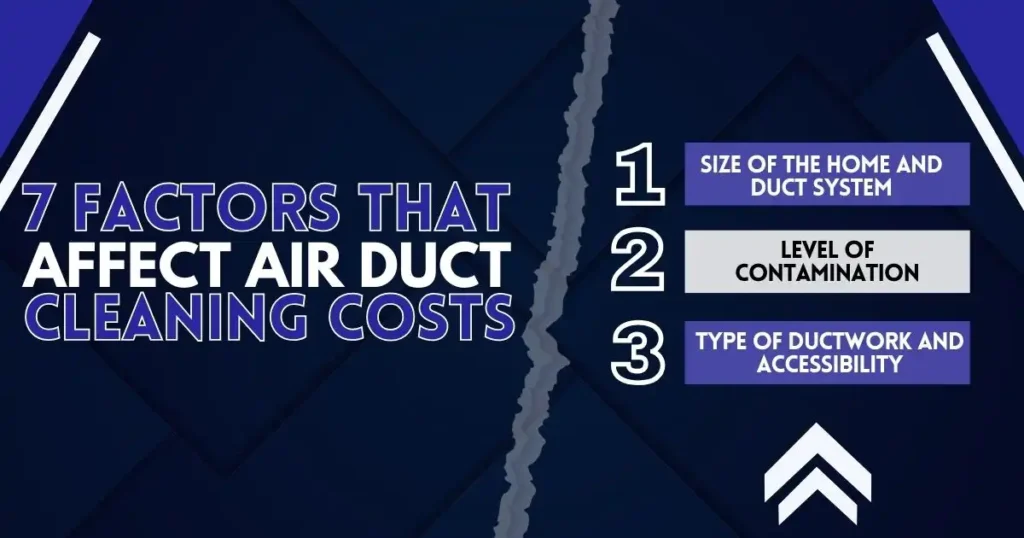
1. Size of the Home and Duct System
The size of a home significantly influences air duct cleaning prices, as larger spaces have more extensive duct systems requiring thorough cleaning. More vents, registers, and pathways mean additional labor, equipment usage, and time, ultimately increasing duct cleaning price. Smaller homes typically incur lower costs due to fewer ducts and simpler layouts.
For example, a 1,500-square-foot home may cost between $180 and $360 for air duct cleaning, depending on regional pricing and service providers. Costs are calculated per square foot, often ranging from $0.15 to $0.30. Larger homes with complex ductwork designs or multiple HVAC units may face higher cleaning expenses.
2. Level of Contamination
The extent of contamination within air ducts significantly influences cost to clean air ducts. Ducts heavily laden with dust, pet hair, mold, or evidence of rodent infestations necessitate more intensive cleaning methods, thereby increasing labor and time requirements, which elevates overall expenses.
Homes with pets, recent renovations, or high humidity levels are more susceptible to rapid accumulation of contaminants. For instance, pet dander and construction debris can quickly clog ducts, while elevated humidity fosters mold growth, all of which demand thorough cleaning to maintain indoor air quality and HVAC efficiency.
3. Type of Ductwork and Accessibility
The layout and accessibility of ductwork significantly affect vent cleaning cost, as complex or hard-to-reach ducts require more effort and specialized tools. Ducts located in attics, crawl spaces, or behind walls pose challenges for technicians, increasing labor time and the need for advanced equipment, which ultimately raises duct cleaning price.
In contrast, homes with straightforward duct configurations, such as those with exposed or easily reachable ducts, tend to have lower air duct cleaning costs. When technicians can quickly access vents and main duct lines without obstructions, the process becomes more efficient, reducing labor time and minimizing the need for specialized tools, leading to lower overall expenses.

4. Number of Vents and Returns
The number of supply vents and return registers in a home directly impacts air duct cleaning prices. Since each vent serves as an entry or exit point for airflow, cleaning them individually requires time and effort. Many service providers charge per vent, meaning homes with more vents will naturally have higher cleaning expenses.
For instance, with rates typically ranging from $25 to $50 per vent, a home with 10 vents could face costs between $250 and $500. Larger homes with extensive duct systems or multiple floors often have more vents, leading to increased duct cleaning cost.
5. Geographic Location
Regional labor rates and the high cost of living in Las Vegas impact air duct cleaning costs. As the city continues to expand, the demand for HVAC cleaning costs rises, driven by a growing population and extreme desert temperatures. Homeowners rely heavily on air conditioning, making regular maintenance essential to ensure efficiency, air quality, and cost savings.
In Las Vegas, air duct cleaning costs range from $350 to $600, reflecting the demand for professional services. However, in rural Nevada, where labor costs demand are lower, prices range from $200 to $400. Despite lower costs, maintaining clean ducts is still essential for improving HVAC cleaning cost efficiency, reducing allergens, and enhancing air quality.
6. Additional Services
Beyond standard air duct cleaning, additional services such as sanitization, antimicrobial treatments, or mold remediation can substantially increase cost of air duct cleaning.
- Sanitization: Sanitization involves using disinfectants to eliminate bacteria and viruses, reducing health risks. It increases costs due to specialized cleaning agents and labor. Causes include poor ventilation, high humidity, and accumulated dirt.
- Antimicrobial Treatments:Preventing bacterial and fungal growth is essential, as it can increase duct cleaning price due to additional treatments and labor. Proper maintenance, regular inspections, and professional cleaning help control contamination, improving air quality and HVAC system efficiency.
- Mold Remediation: Mold removal involves thorough cleaning, dehumidification, and sometimes structural repairs, making it expensive. Causes include water leaks, flooding, humidity, and poor ventilation, allowing mold to thrive in walls, carpets, and ceilings.
7. Frequency of Cleaning
Regular maintenance helps control long-term air duct cleaning costs. Cleaning every three to five years prevents dirt, dust, and microbial buildup, reducing deep cleaning needs ($200–$500). Routine HVAC cleaning cost helps extend the lifespan of carpets, upholstery, and HVAC systems.
Neglecting maintenance leads to severe contamination, requiring costly services. Mold remediation ranges from $500 to $6,000, while deep duct cleaning costs $400–$1,000. Delayed cleaning increases labor and material expenses. Regular upkeep is a cost-effective strategy to prevent expensive restoration, protect health, and maintain a clean, safe living environment.
5 Tips to Reduce Your Air Duct Cleaning Costs
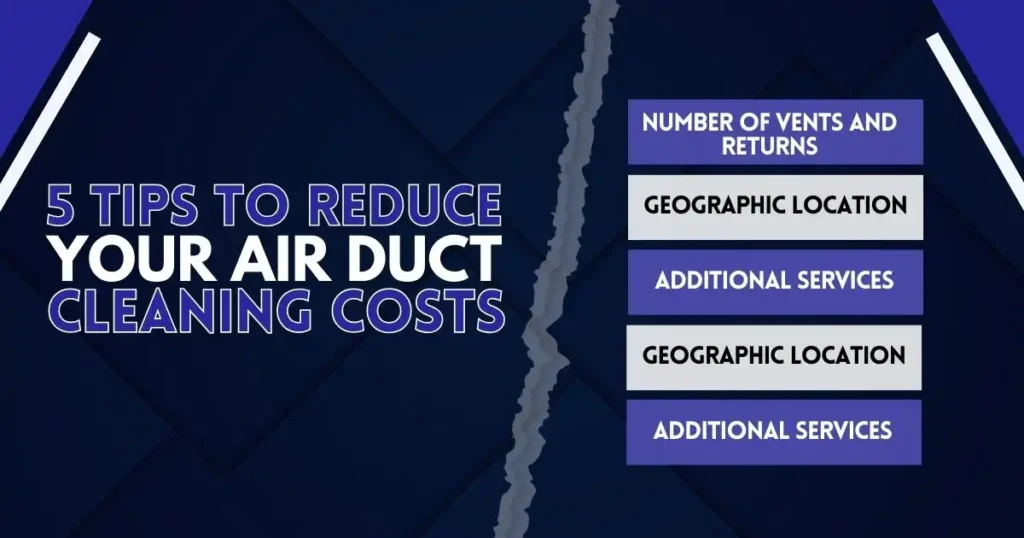
Keeping your air ducts clean is essential for maintaining indoor air quality and HVAC efficiency, but professional cleaning can be costly. Through following smart maintenance strategies, you can reduce your air duct cleaning costs while ensuring a healthier home.
1. Schedule Regular Maintenance
Routine air duct maintenance prevents excessive dust buildup, reducing the need for frequent deep cleaning. Changing air filters every 1–3 months and scheduling professional inspections annually can help keep duct cleaning costs low.
2. Seal and Insulate Ducts
Properly sealed and insulated ducts prevent dust, debris, and moisture from accumulating, reducing contamination. This lowers cleaning frequency and prevents mold growth. Using high-quality sealants and insulation materials enhances efficiency, reduces energy costs, and minimizes the need for expensive deep cleaning services.
3. Use High-Quality Air Filter
Upgrading to HEPA or high-MERV filters captures finer particles, reducing dust in ducts. Regular filter replacement prevents blockages and maintains efficiency. Quality filters lower cleaning frequency, cutting long-term maintenance costs while enhancing indoor air quality and system performance.
4. Ensure Proper Ventilation
Good airflow prevents dust and moisture buildup, reducing the risk of mold and bacterial growth in ducts. Using exhaust fans, dehumidifiers, and proper ventilation strategies lowers contamination levels. Proper airflow maintenance reduces the need for frequent duct cleanings, helping homeowners save on cleaning costs over time.
5. Compare Service Providers
Research multiple air duct cleaning companies to compare duct cleaning price, reviews, and services. Choosing a reputable company with transparent pricing prevents overcharges and ensures quality service.
Clean Ducts, Healthier Home, Lower Bills
Air duct cleaning is more than just a maintenance task—it’s an investment in cleaner air, lower energy bills, and a healthier home. In places like Las Vegas, where HVAC systems run year-round, dirty ducts force your system to work harder, raising energy costs and affecting air quality. Regular cleaning prevents costly repairs, improves efficiency, and reduces allergens.
Don’t overpay for air duct cleaning! Vegas Plumbing Pros gives you honest pricing and expert advice—no scams, no gimmicks. Know the real cost before you book! Contact us now for a free consultation and learn more if your home truly needs it. Make a smart choice—trust the pros who put your needs first!
FAQs
How often should an air duct be cleaned?
The EPA recommends cleaning air ducts only when visible signs of mold, excessive dust buildup, or rodent infestations are present. While routine cleaning isn’t always necessary, it can help improve indoor air quality, reduce allergens, and enhance HVAC efficiency. Homeowners with pets, allergies, or respiratory issues may benefit from more frequent professional cleanings.
Does cleaning air ducts really make a difference?
Yes, air duct cleaning helps improve airflow, reduce allergens, and enhance HVAC efficiency, especially in homes with pets or allergies. Removing dust, debris, and contaminants prevents blockages, allowing the system to run more efficiently. Clean ducts contribute to better indoor air quality, lower energy bills, and a healthier living environment for homeowners.
Is it possible to clean your own air ducts?
While DIY cleaning is possible, professionals have the tools to thoroughly remove dust and contaminants, ensuring a more effective cleaning process. Homeowners can clean vent covers and vacuum visible dust, but professional services use specialized equipment to reach deep within ducts, improving HVAC efficiency and indoor air quality.
What are the cons of duct cleaning?
Poor air duct cleaning can damage ductwork or release allergens, worsening indoor air quality. Inexperienced cleaners may cause leaks in the HVAC system. While the average air duct cleaning cost varies, professionals ensure a safe, thorough job, preventing repairs and improving airflow.

